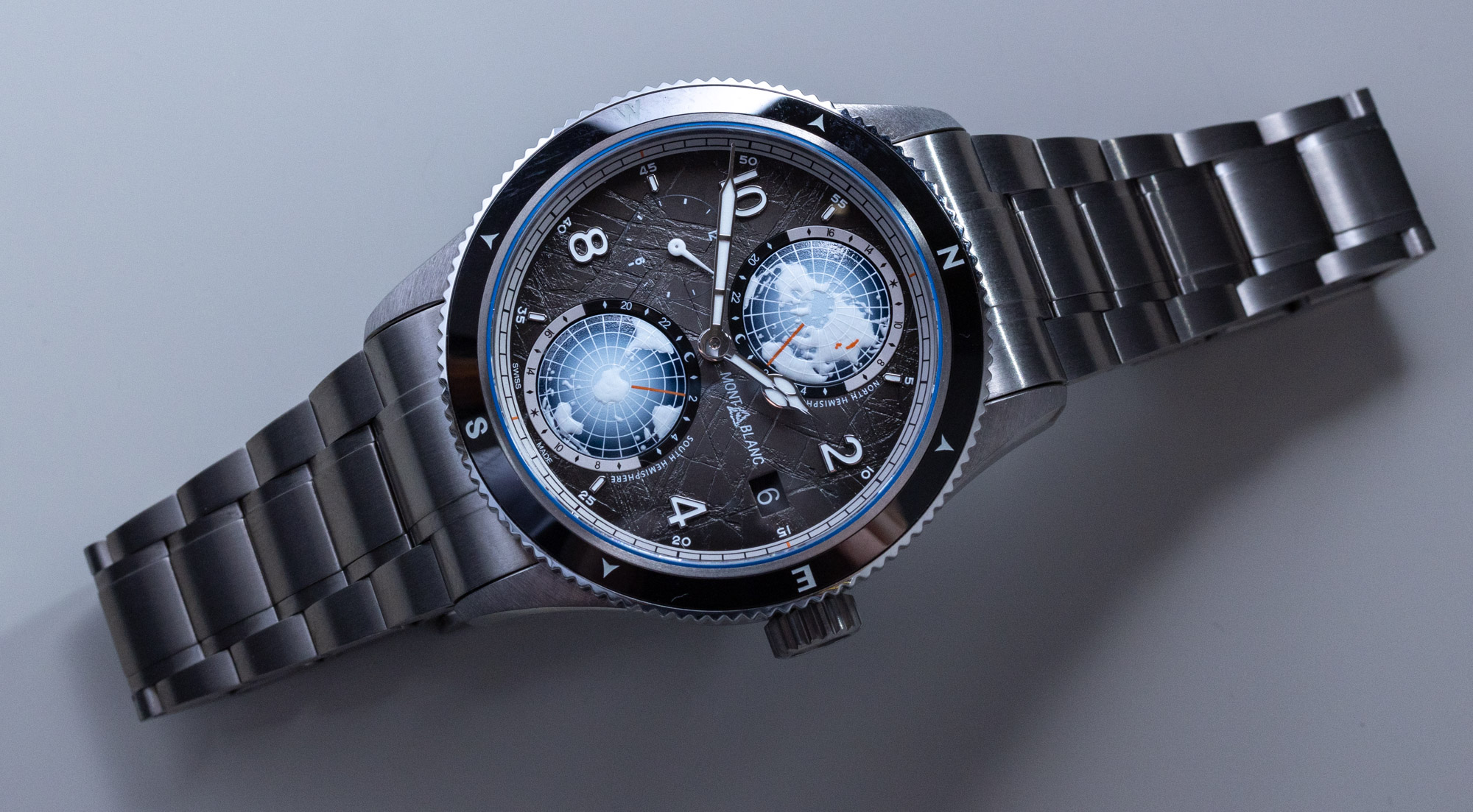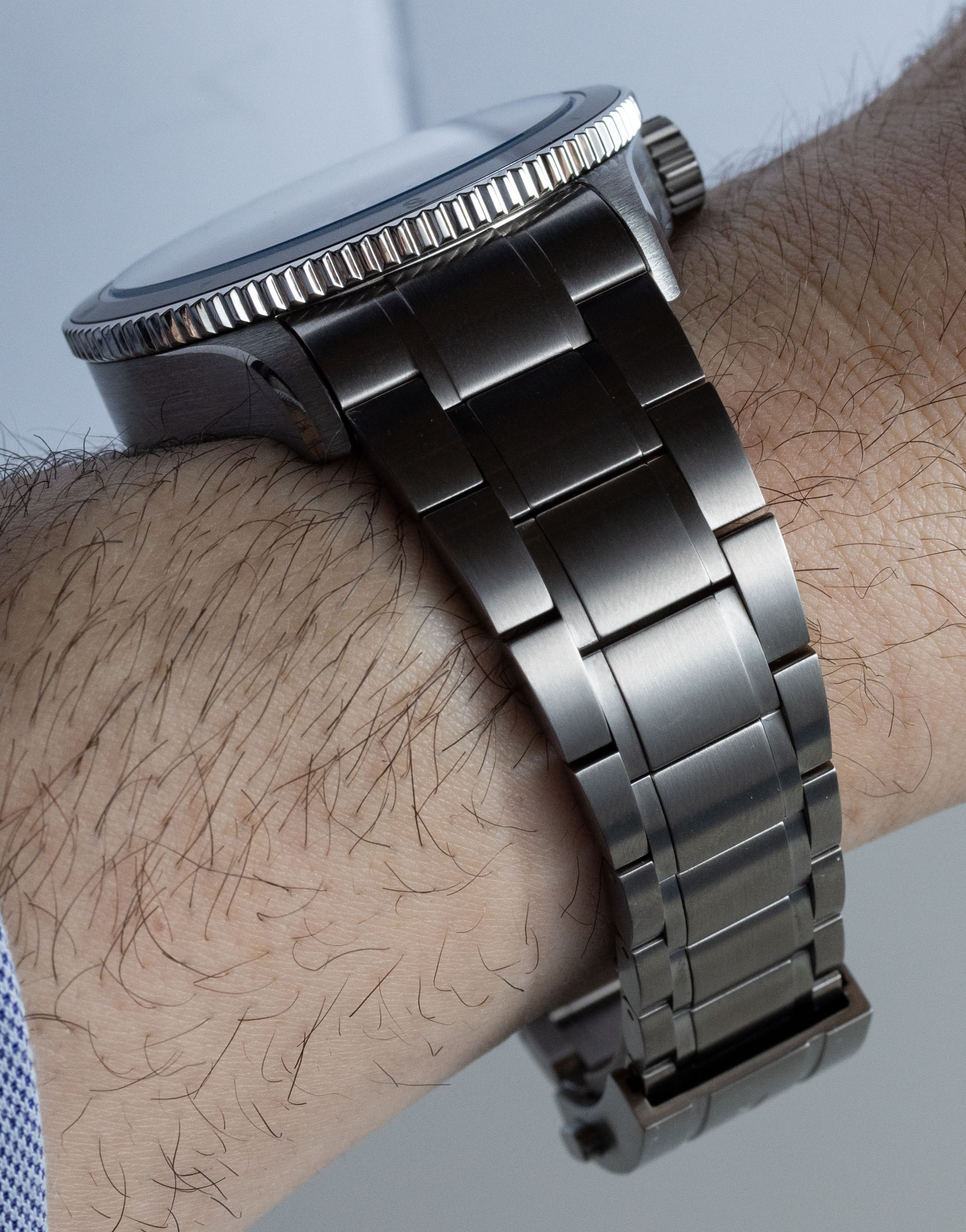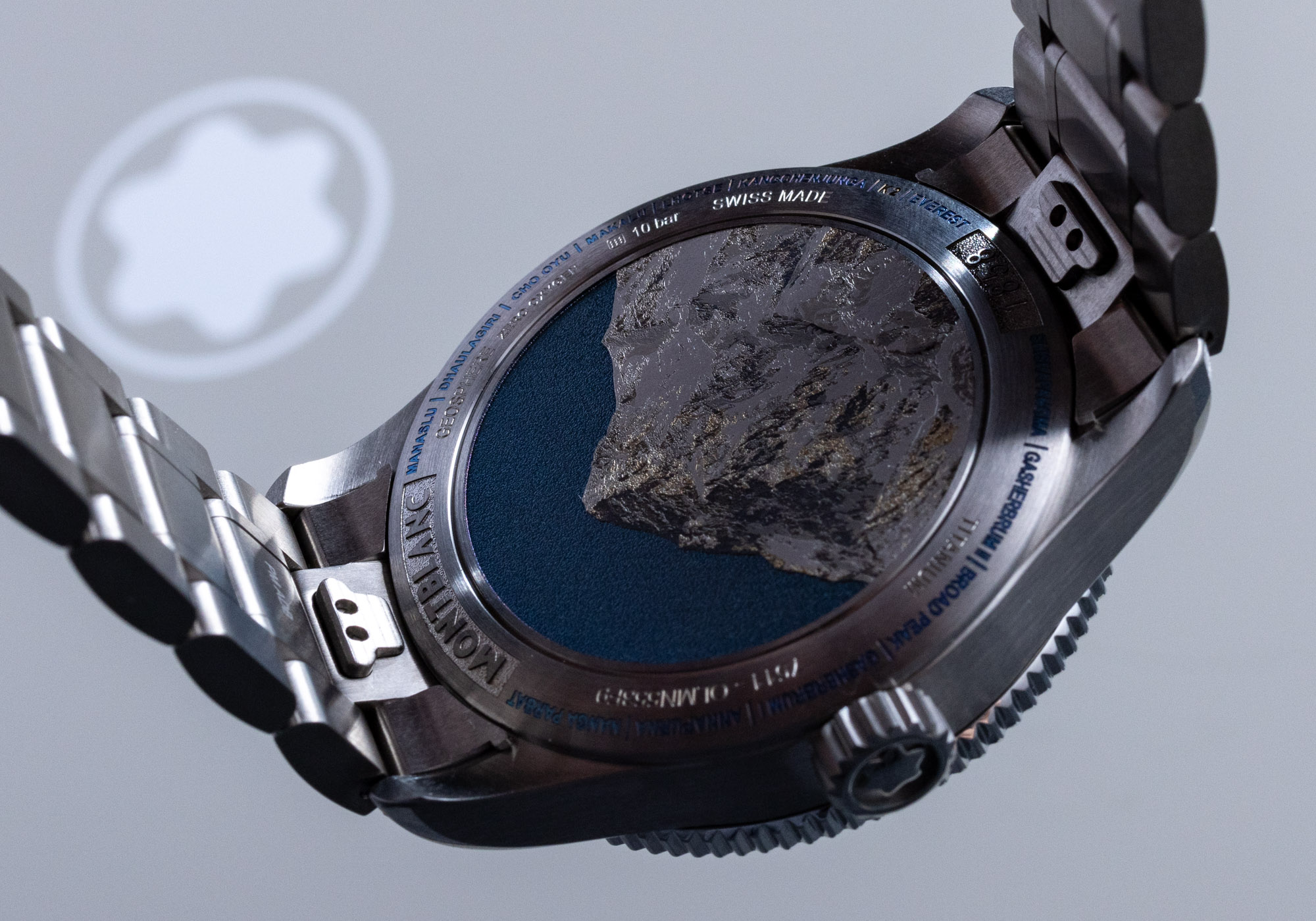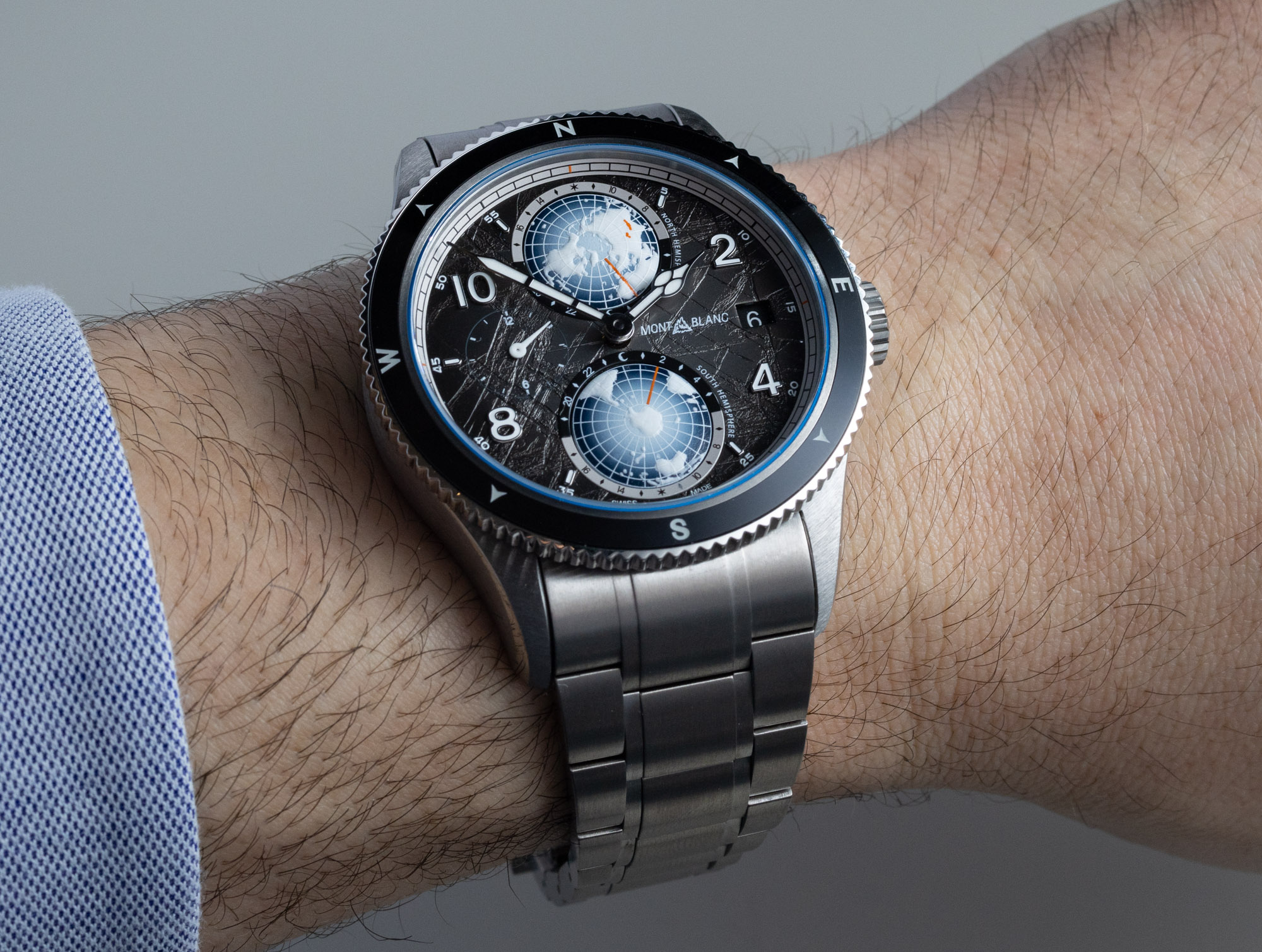
At Watches & Wonders 2023, Montblanc released a small capsule collection of four watches called the “Montblanc 1858 The 8000 series.” Each of these watches is built on the same core theme: retro luxury sports watches inspired by mountaineering and high-altitude climbing. The most elite of the four The 8000 watches is similar to this featured Geosphere model but with an added chronograph complication and produced as a limited edition, but at the same time, they will not be produced for more than a few years. This Montblanc 1858 Geosphere 0 Oxygen The 8000 watch, and the other two in the capsule collection are not positioned as limited-edition models. Aside from the striking sfumato-style gray glacier-style watch faces, what makes The 8000 (and a very small number of other Montblanc 1858 collection pieces) is that the watches are devoid of oxygen.
Montblanc’s 1858 collection is a more retro sports watch-styled subset of Montblanc watches that use a more historic logo. The current head of the Montblanc watches division has made the decision to dedicate the 1858 collection to sports watches inspired by mountain climbing. Not only is this an activity he personally enjoys, but it fits in with the Montblanc brand theme and logo. “Montblanc” (white mountain) is a famed tall mountain visible in Switzerland and France. The German brand’s (their watches are produced in Switzerland, however) logo is also meant to be an aerial view of the mountain’s snowy top, shaped like a soft star. In any event, if Montblanc is going to be serious about sports watches these days, coming up with ones that look like mountain climbing gear makes sense, especially in a crowded landscape of competitive products often more focused on other activities such as diving, driving, or flying.
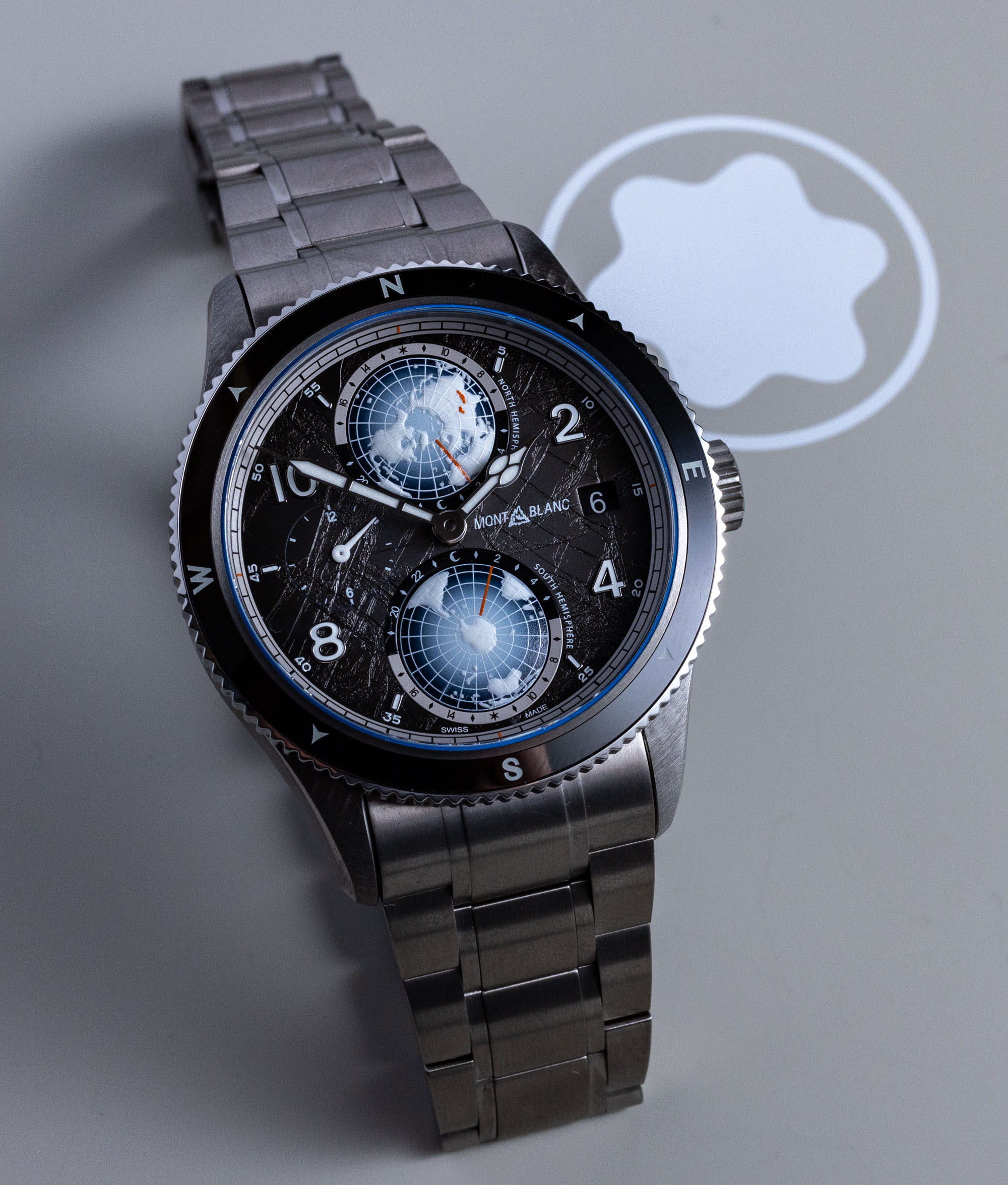
The 8000 series of watches is referred to as such because the collection focuses on mountains that are over 8000 meters high. According to Montblanc, there are 14 of them, and this particular Montblanc 1858 Geosphere 0 Oxygen The 8000 watch is inspired by Montblanc ambassador Reinhold Messer, who holds the record of being the first person to climb them all. However, there are no markings specific to Mr. Messer on this particular watch aside from the fact that he chose which mountain to feature on the caseback. Even though the 1858 Geosphere 0 Oxygen The 8000 is pricey, the quality is very good. Montblanc hasn’t done much marketing to compete in the $5,000 – $10,000 sports lifestyle watch space, but if you compare its products head-to-head with others, you’ll find that Montblanc makes a more than decent product. Probably the biggest thing going against the brand is that, at this price, it is still offering in-house modules on base Sellita movements. The quality and performance are probably there, but other brands such as Rolex, Tudor, TAG Heuer, Omega, and Breitling have all trained consumers that at these price points they should get something with a proprietary movement.
The upside is that the all-titanium case and bracelet are very finely machined and finished. The bracelet (which uses quick-release ends) also has a micro-adjust system hidden in the deployant clasp. The case has a bi-directional rotating bezel (in steel actually) with a black ceramic insert that has compass markings engraved in it. This looks very nice but isn’t quite that useful for either navigation or timing purposes. The caseback on this and other Montblanc 1858 models that use this same 3D laser engraving and color technology is super-cool. For the 1858 Geosphere 0 Oxygen model, we have a blue, white, and gray rendition of K2 (the second-highest mountain in the world, though considered more challenging to ascend than Everest, the highest). The 3D laser engraving effect is impressive. I say this because, frankly, I’ve seen some awful mountain motifs on the backs of watches before. This product does “mountain on a caseback” pretty well.
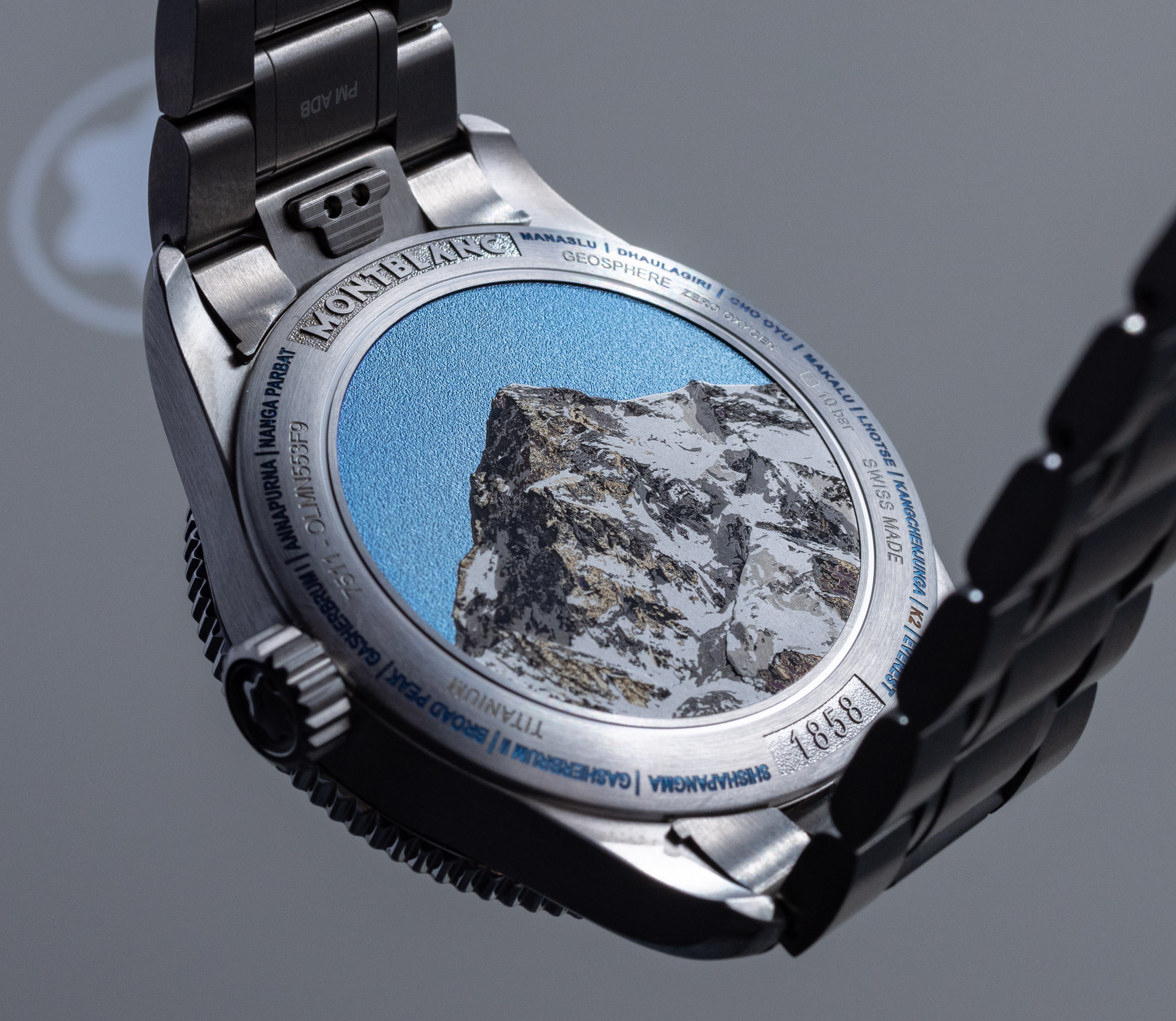
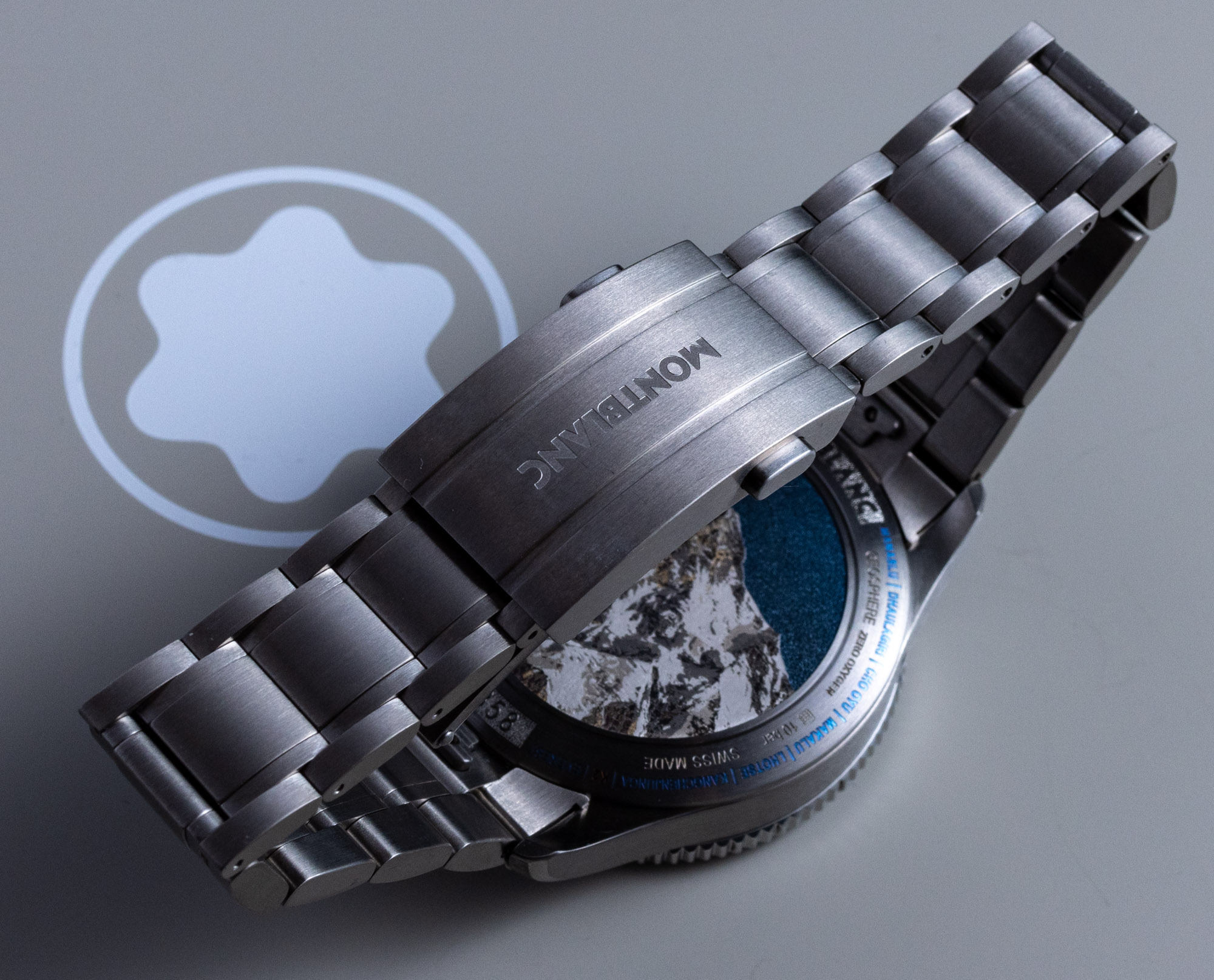
The 1858 Geosphere case is titanium, 42mm wide and 12.7mm thick with 100 meters of water resistance. Over the dial is a domed and AR-coated sapphire crystal (with very little glare may I add). Inside the watch is Montblanc’s caliber MB 29.25 automatic movement. As I mentioned above, the MB 29.25 has a unique world time module on top of a Sellita SW300 automatic movement. It operates at 4Hz with 42 hours of power reserve. The module adds a second time zone 12-hour hand at the 9 o’clock position, as well as two 24-hour discs that indicate the time via the globe in both the Northern and Southern Hemispheres. This is a modified GMT system, that instead of focusing on reference cities, uses a more globe-based visual experience to read the world time. It is a fun system more inclined toward outdoor adventuring than airport travel, though a luxury timepiece such as this is well-suited to both activities. Note the bit of orange color on the Northern Hemisphere map, which indicates the location of the K2 and Everest mountain ranges, I believe.
Montblanc has produced other 1858 Geosphere watches before, for sure. Indeed, they might have some slightly different dials or case materials, but this watch is mostly a cosmetic execution of other things Montblanc has done. That said, there is one additional exceptional element to this and the other The 8000 series watches (in addition to a very small number of other 1858 models from Montblanc) to be given cases that have the oxygen sucked out of them. One hint about this is the thin blue line around the periphery of the crystal that hints there is something special here.
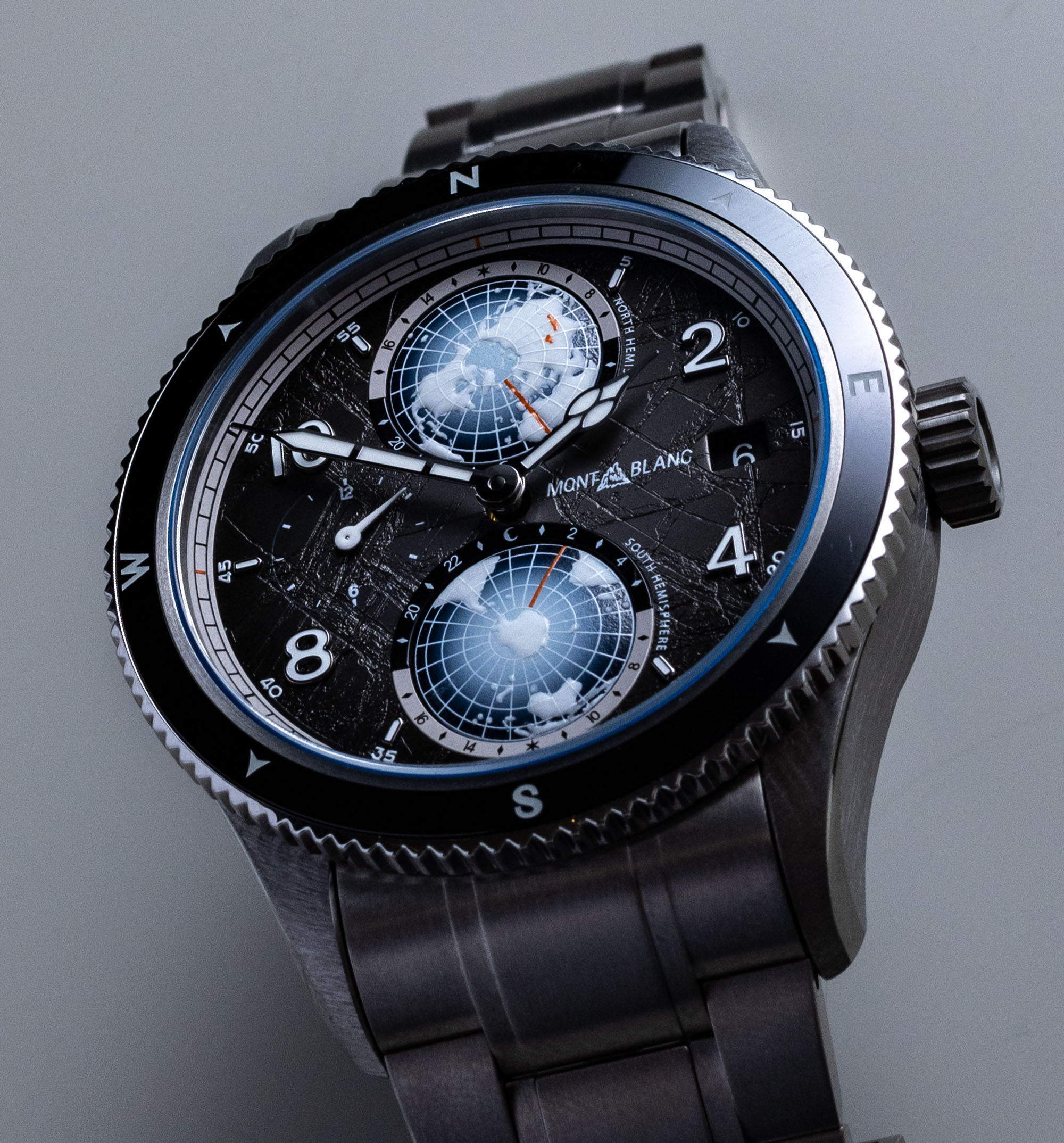
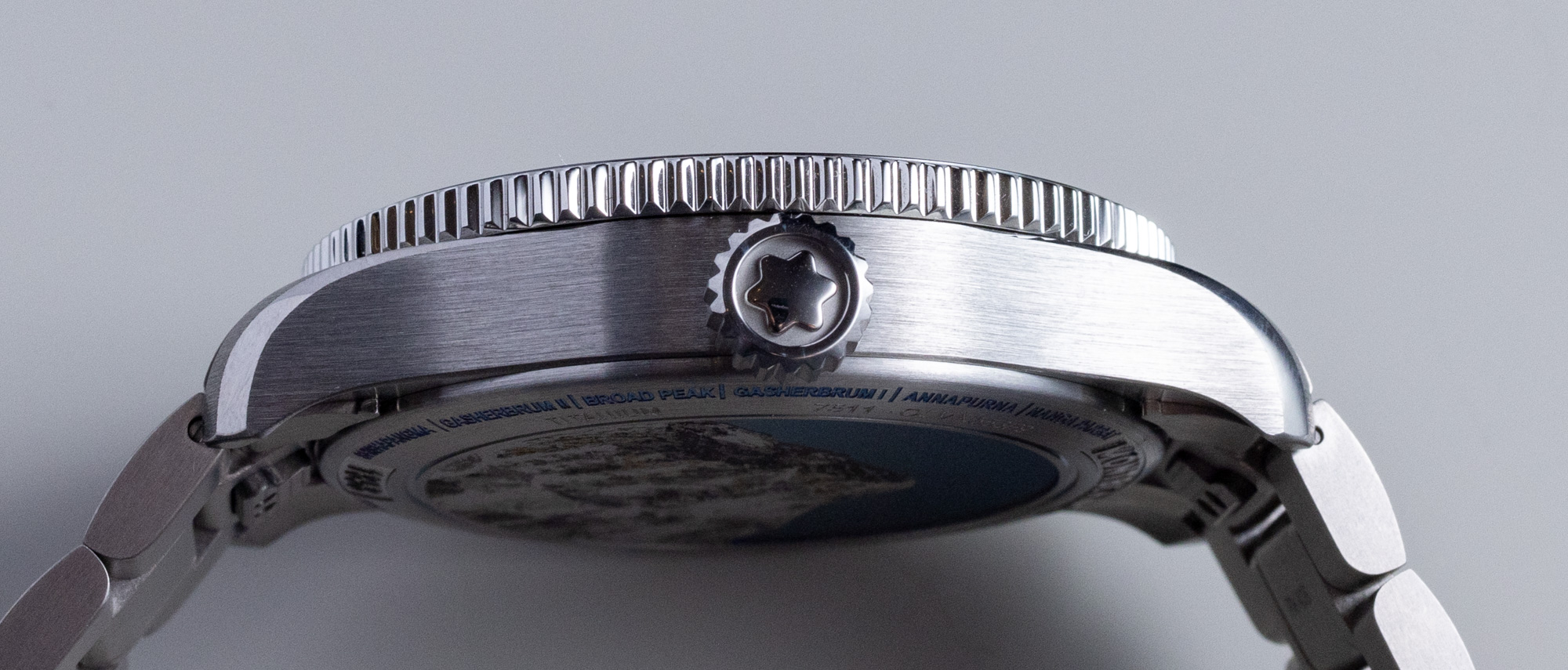
How Montblanc’s Watch Director got approval to produce ongoing watches (of course, at low production numbers) that go through the process of having the oxygen in the case replaced with a different gas is beyond me. But kudos to Laurent Lecamp. When you remove oxygen from inside a watch case, you make the “atmosphere” in the watch a bit more like the atmosphere at high altitude — at least, that’s the poetic reason. The functional reason is that when you remove oxygen from a case and movement chamber, you also remove all the moisture. Thus, watches without oxygen inside cannot fog up if they experience a rapid change in temperature. A fogged-up watch can render the device functionally useless.
Another important function of removing oxygen is that you increase the lifespan of the movement because you remove oxidizers that affect lubricants in the movement, though, to be honest, I don’t really know the data or metrics behind this. There are so few oxygenless watches out there (because creating the special gas environment and maintaining it is a hassle), and most watchmakers don’t really know real-world examples. I want to add that having no oxygen is not the same as having nothing at all. I believe that Montblanc relies on an air-replacement gas mixture. A more extreme version of an airless (no gas at all) watch case and movement environment is different. This requires creating a persistent vacuum in the case with pretty much no gas at all. Keeping this seal is a particular challenge because elements such as hydrogen are tiny molecules. The reason airless environments for mechanical watch movements are interesting for watchmakers is that they allow the oscillating balance wheels to operate in an environment free of air drag (friction that slows the movement down and this contributes to power loss and inaccuracy over time). It is cool and interesting that this and a handful of other Montblanc 1858 watches have the “0 Oxygen” feature. I am truly curious to know what consumers make of this when discussing this aspect of the watch in retail stores with sales staff.
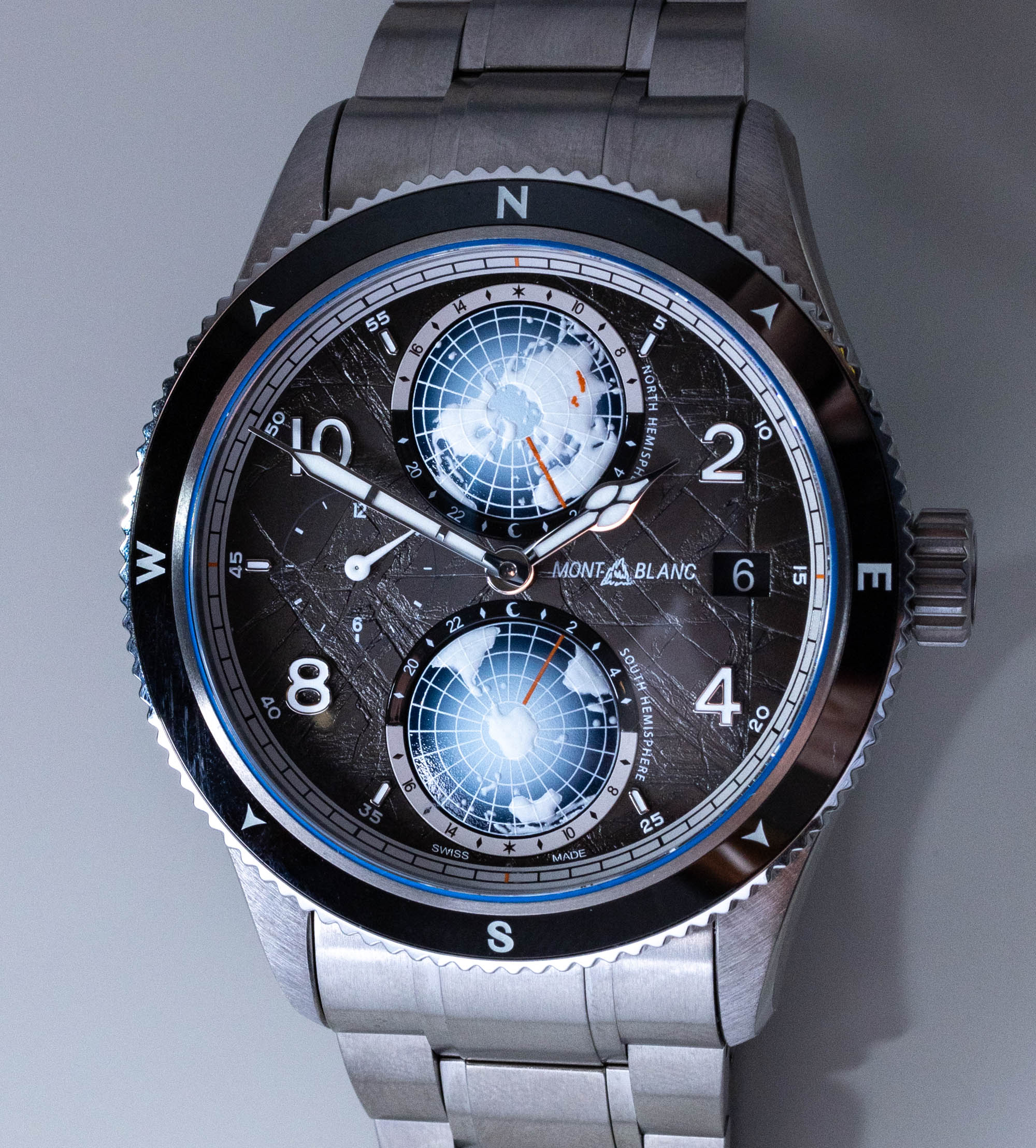
While not for everyone, the Montblanc 1858 Geosphere 0 Oxygen The 8000 is a story-rich watch. It is legible and comfortable, in an attractive case with a spirited design. It might feel like a lot of money, but it also has some features you can’t easily find elsewhere. I’d be more than happy to wear a timepiece like this on a regular basis. Price for the Montblanc 1858 Geosphere 0 Oxygen The 8000 (Ref. MB130982) watch is 7,600 USD. Learn more at the Montblanc website.

